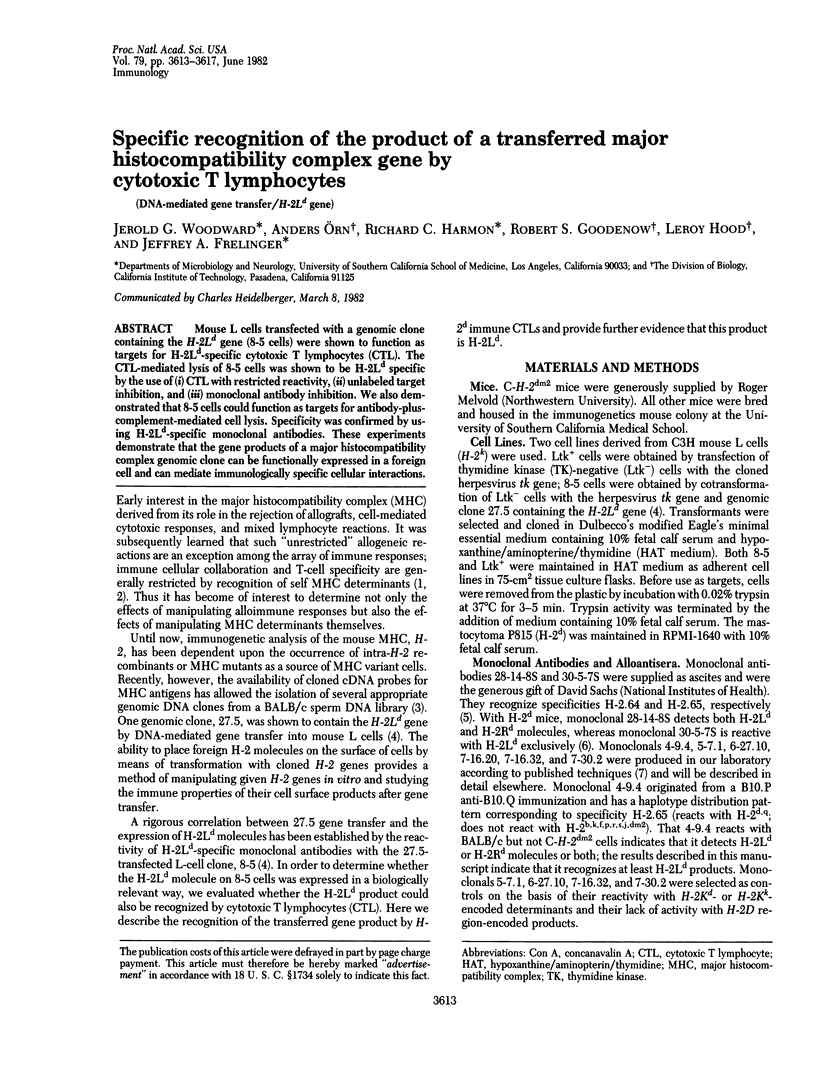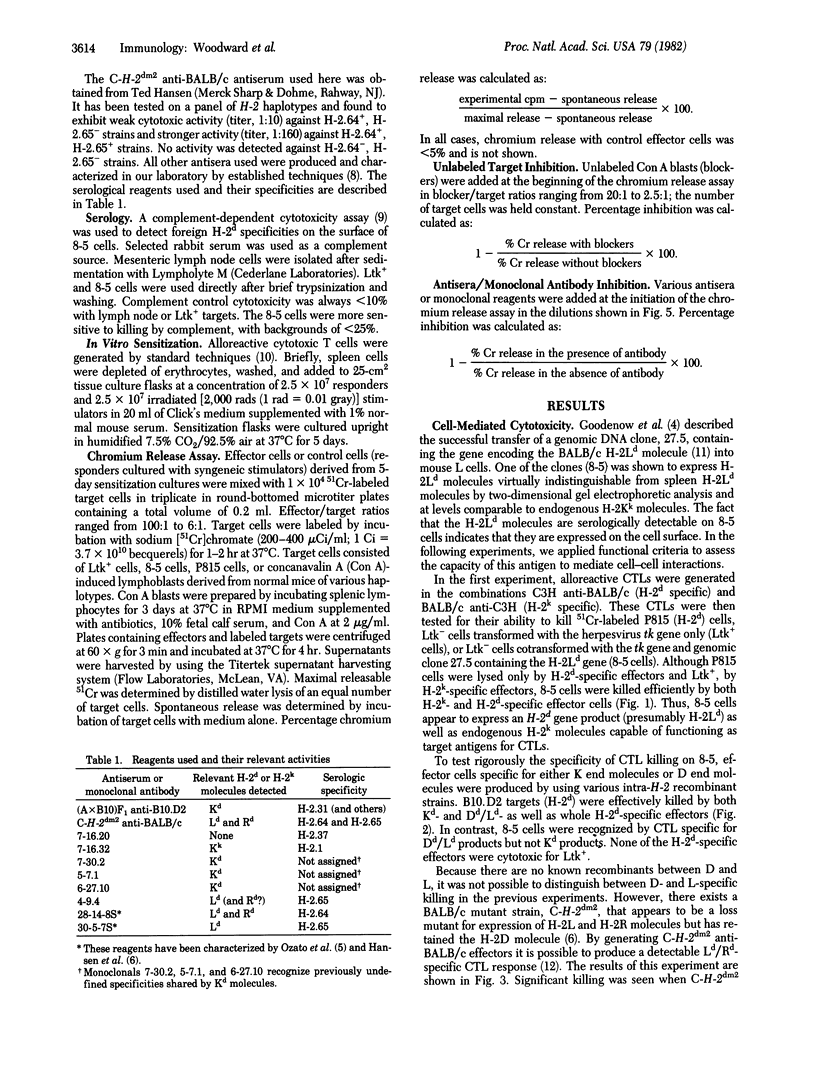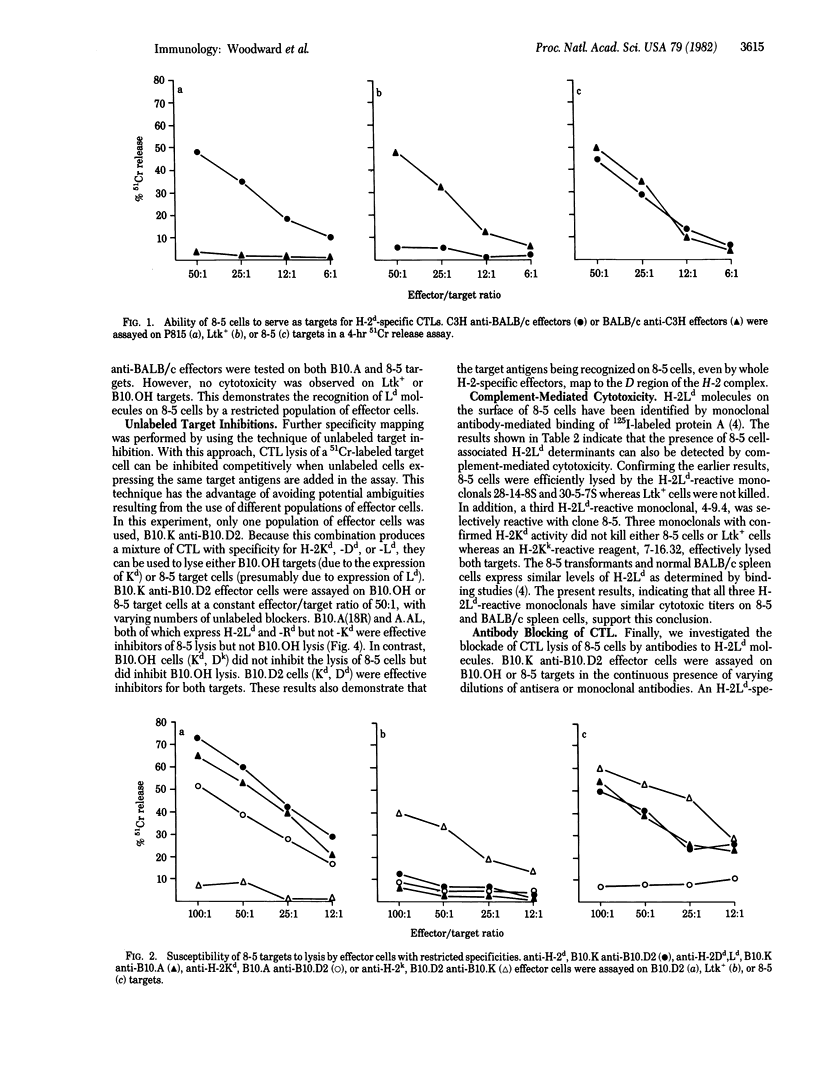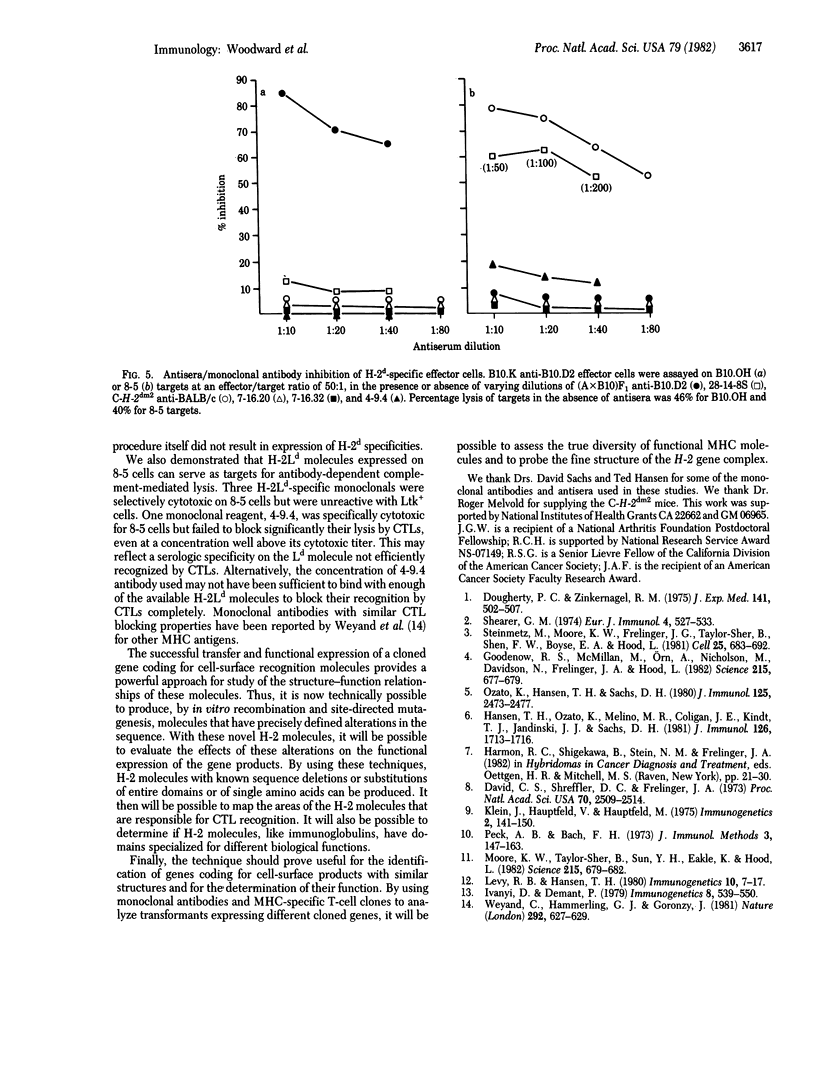Abstract
Mouse L cells transfected with a genomic clone containing the H-2Ld gene (8-5 cells) were shown to function as targets for H-2Ld-specific cytotoxic T lymphocytes (CTL). The CTL-mediated lysis of 8-5 cells was shown to be H-2Ld specific by the use of (i) CTL with restricted reactivity, (ii) unlabeled target inhibiton, and (iii) monoclonal antibody inhibiton. We also demonstrated that 8-5 cells could function as targets for antibody-plus-complement-mediated cell lysis. Specificity was confirmed by using H-2Ld-specific monoclonal antibodies. These experiments demonstrate that the gene products of a major histocompatibility complex genomic clone can be functionally expressed in a foreign cell and can mediate immunologically specific cellular interactions.
Full text
PDF




Selected References
These references are in PubMed. This may not be the complete list of references from this article.
- David C. S., Shreffler D. C., Frelinger J. A. New lymphocyte antigen system (Lna) controlled by the Ir region of the mouse H-2 complex. Proc Natl Acad Sci U S A. 1973 Sep;70(9):2509–2514. doi: 10.1073/pnas.70.9.2509. [DOI] [PMC free article] [PubMed] [Google Scholar]
- Doherty P. C., Zinkernagel R. M. H-2 compatibility is required for T-cell-mediated lysis of target cells infected with lymphocytic choriomeningitis virus. J Exp Med. 1975 Feb 1;141(2):502–507. doi: 10.1084/jem.141.2.502. [DOI] [PMC free article] [PubMed] [Google Scholar]
- Goodenow R. S., McMillan M., Orn A., Nicolson M., Davidson N., Frelinger J. A., Hood L. Identification of a BALB/c H-2Ld gene by DNA-mediated gene transfer. Science. 1982 Feb 5;215(4533):677–679. doi: 10.1126/science.7058331. [DOI] [PubMed] [Google Scholar]
- Hansen T. H., Ozato K., Melino M. R., Coligan J. E., Kindt T. J., Jandinski J. J., Sachs D. H. Immunochemical evidence in two haplotypes for at least three D region-encoded molecules, D, L, and R. J Immunol. 1981 May;126(5):1713–1716. [PubMed] [Google Scholar]
- Levy R. B., Hansen T. H. Functional studies of the products of H-2L locus. Immunogenetics. 1980;10(1):7–17. doi: 10.1007/BF01561548. [DOI] [PubMed] [Google Scholar]
- Moore K. W., Sher B. T., Sun Y. H., Eakle K. A., Hood L. DNA sequence of a gene encoding a BALB/c mouse Ld transplantation antigen. Science. 1982 Feb 5;215(4533):679–682. doi: 10.1126/science.7058332. [DOI] [PubMed] [Google Scholar]
- Ozato K., Hansen T. H., Sachs D. H. Monoclonal antibodies to mouse MHC antigens. II. Antibodies to the H-2Ld antigen, the products of a third polymorphic locus of the mouse major histocompatibility complex. J Immunol. 1980 Dec;125(6):2473–2477. [PubMed] [Google Scholar]
- Peck A. B., Bach F. H. A miniaturized mouse mixed leukocyte culture in serum-free and mouse serum supplemented media. J Immunol Methods. 1973 Oct;3(2):147–163. doi: 10.1016/0022-1759(73)90030-6. [DOI] [PubMed] [Google Scholar]
- Shearer G. M. Cell-mediated cytotoxicity to trinitrophenyl-modified syngeneic lymphocytes. Eur J Immunol. 1974 Aug;4(8):527–533. doi: 10.1002/eji.1830040802. [DOI] [PubMed] [Google Scholar]
- Steinmetz M., Moore K. W., Frelinger J. G., Sher B. T., Shen F. W., Boyse E. A., Hood L. A pseudogene homologous to mouse transplantation antigens: transplantation antigens are encoded by eight exons that correlate with protein domains. Cell. 1981 Sep;25(3):683–692. doi: 10.1016/0092-8674(81)90175-6. [DOI] [PubMed] [Google Scholar]
- Weyand C., Hämmerling G. J., Goronzy J. Recognition of H-2 domains by cytotoxic T lymphocytes. Nature. 1981 Aug 13;292(5824):627–629. doi: 10.1038/292627a0. [DOI] [PubMed] [Google Scholar]


